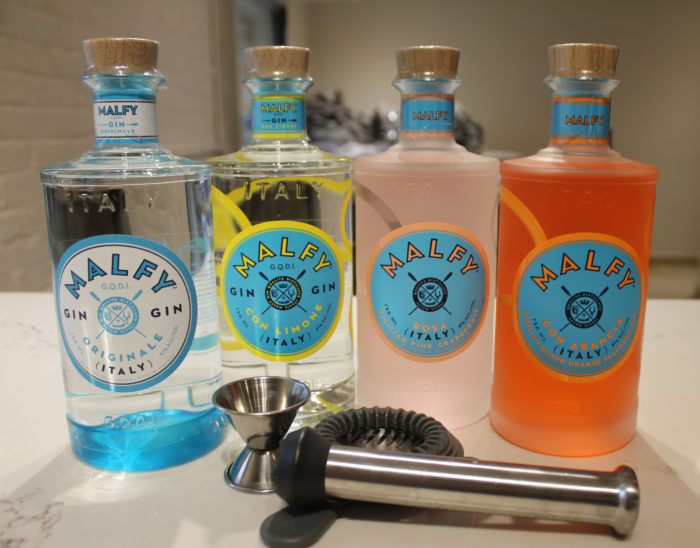
Juniper berries have been used as medicine since the Pharaohs in ancient Egypt. They were a staple in the kits of medieval practitioners of early modern medicine in Europe.
And then, by the early 1600s, Europeans had discovered how to mix alcohol with juniper berries through distillation. Gin was born. Well, back then it was first something called Genever that eventually morphed into gin. Innovation in gin making has been relentless for the past four hundred years.
Juniper berries may look small, but they are a Disneyland of chemical compounds, some of them measured in the “parts per trillion” mode. Distillation brings those compounds into play, but the way distillation is actually conducted – how fast and at what temperature and in what vessel — affects the amount of each compound coming out and the relative mix of all of them in the final product.
That’s a complicated way to say this: when you stand in front of the shelf of gins in a liquor store and ask yourself, “Can these all me different,” the answer is YES.
Of course, today, gin is made with much more than just juniper berries. In toto, hundreds of different natural ingredients are used in the thousands of gin products made around the world. Consider three prominent gins and their ingredients:
- Tanqueray: juniper, angelica root, coriander seed, licorice root
- Hedrick’s: juniper, angelica root, coriander seeds, cubeb berries, orris root, chamomile, caraway seeds, elderflower, mesdowsweet, lemon peel, orange peel, rose and cumber essences post-distillation
- Citadelle: juniper, almond, orris root, fennel seeds, aniseed, grains of paradise, orange peel, cardamom, violet root, lemon peel, coriander seeds, cubeb berries, cassia bark, licorice root, savory, nutmeg, angelica root, cumin, cinnamon
All these products are good but you may now be able to understand a pattern. People begin their gin drinking with Tanqueray, based perhaps on price and marketing and name recognition. Once you have tried a Hedrick’s or Citadelle, though, you don’t go back. Those more sophisticated products will capture your loyalty.
Which brings us to the picture you see: the family of Malfy gins from Italy. I discovered them recently and I can tell you this: the best gin I have ever tasted in my life. A Gin and Tonic made with Malfy Originale is unsurpassed. If you just take the stopper out of the bottle and sniff the Originale gin, you’ll be totally charmed by the floral hues. It’s magnificent.
And, to round out the family, Malfy has gins with lemon, pink grapefruit, and blood orange. They source all their ingredients from Italy, so you even have some Sicilian citrus here. And certainly juniper grown in Italian warmth on a particular mountainside. There is terroir for juniper, too.
I’ve been having a gin-wonderful time playing with these gins. Over the coming weeks, you’ll see a recipe or so a week featuring these superior products. I hope you follow along and I do encourage you to find Malfy, drink Malfy, and surely relish Malfy.
My first cocktail, the Malfy Citrus Splendor, will be posted later today. It’s that Malfy Arancia or Blood Orange mixed with Cava Cava orange juice. Just what you want for the coming days of summer heat.
Oh, what is Malfy gin made with? All the ingredients? Ah, that’s a secret. A wonderful secret.
